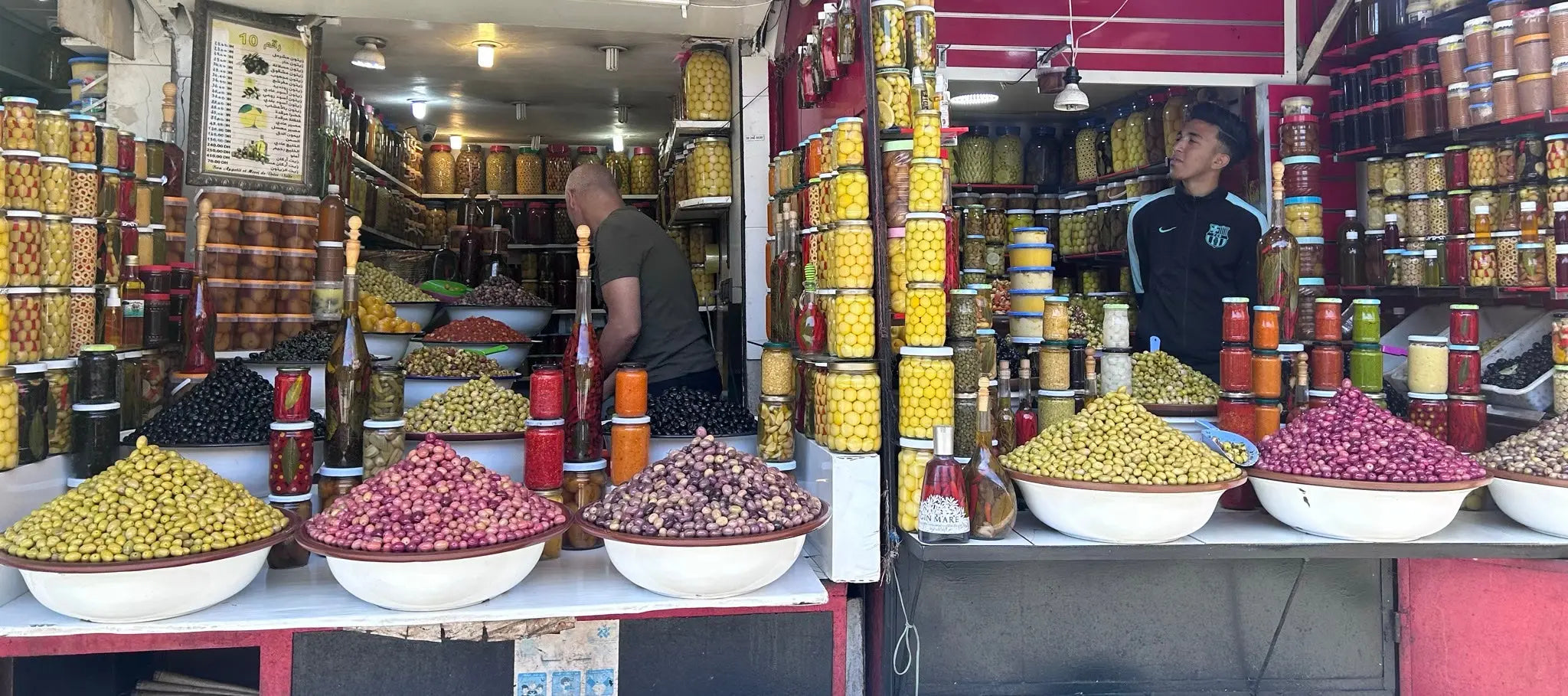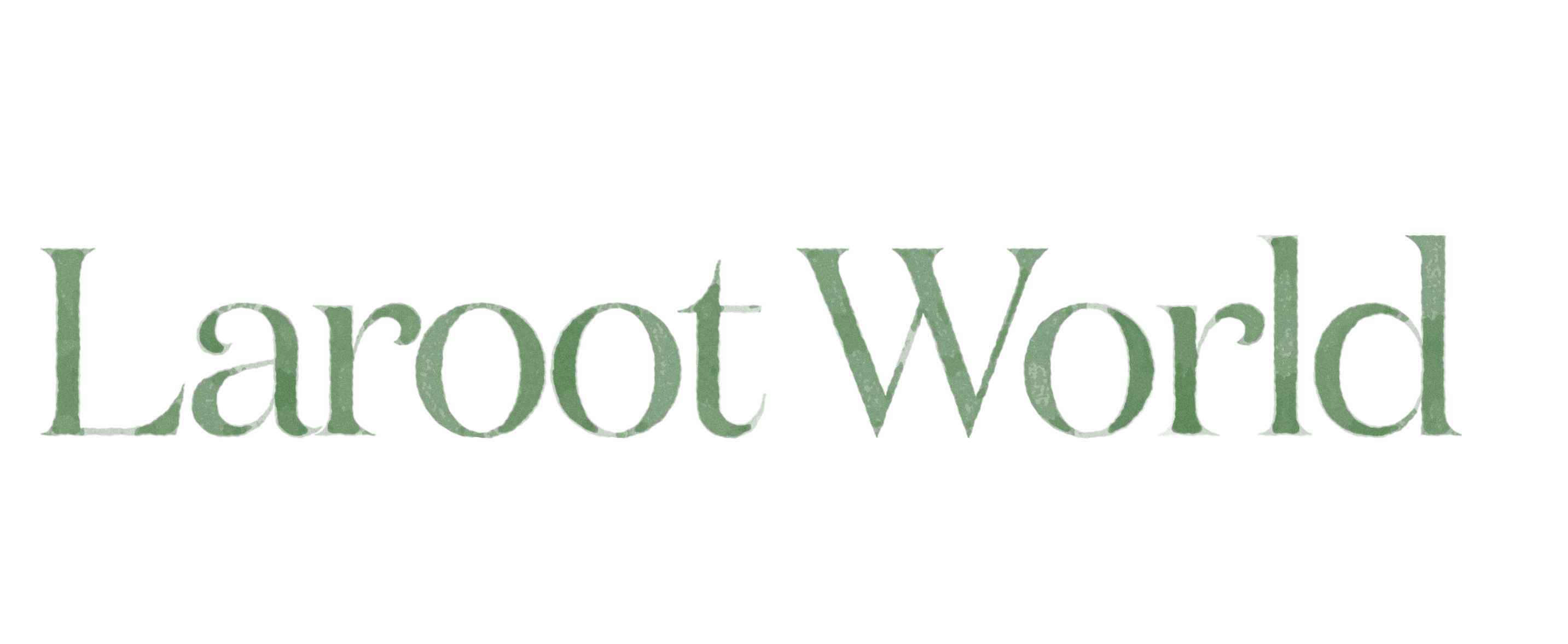At home in Marrakech

Marrakech is home. Arriving here, smelling the spices, feeling the light, absorbing the warmth: that is what the feeling of home is. In our family abode here, the queen of the house is actually the chef, Majida. She has been with us for many years, and she is effectively family. Home and family are recurring themes here in Morocco. It was Majida who, many years ago, introduced me to the power of turmeric in food, taught me how to make kefte properly, and of course gave me the base for our Laroot chicken tajine, which under Megan’s wise supervision has become the star dish of our roster. It is Majida who never lets me go back to New York without some lemon confit (to use when cooking anything and everything) and some spices from her own, long-trusted purveyor.

So many Moroccan dishes are staples of the world’s kitchens but it is the lesser known delicacies that always get me. The lamb shoulder dalaa, typically served with couscous and tajine vegetables, is slowly roasted with crispy skin. It is a heavy dish, but one that oozes comfort. It is exactly the kind of dish that both inspires Laroot and its flavors, and also inspires me to eat Laroot on my normal days back in New York, so that I can dream of nothing but the delicious flavor of this dish when it is next time to travel and indulge.

When we go to the souk during Ramadan, though the locals are fasting, the thin passages of the famous Marrakech bazaar are alive with the delicious smell of fried dough. This is because every household and food vendor is busy making chebakiya, a fried dough and honey delicacy that is served during Iftar, the very important break of fast each day at dusk. As delicious as they are filling, the flower shaped cookies are a staple of the Ramadan table and are generally served with a salty harira soup made from chickpeas, tomatoes and lentils in the evening. An alternative to the cookies are dates. The date palm is known as the tree of life in the Quran’s story of genesis, thus its sweet dried fruit plays a ceremonial role in breaking the fast at Iftar, and in Morocco – as in many other locations in the Middle East – dates are a staple aperitif and snack. Anyone who hasn’t yet tried mixing a bite of a date with a savory dish should definitely give it a go. It may not be an intuitive combination in the Western understanding but it opens one's palate to wonderful new depths.

Of course no savory dish for me personally is complete without a spice. Back at home Majida is, as always, busy making her very special harissa, the Moroccan tomato spice paste.
Majida’s harissa takes the prize in my book for the most flavorful and pungent of spice pastes. When I’m in Morocco I put harissa on everything, including bread and butter. No exceptions. Harissa is also incredibly healthy, and as such has been included in the Laroot menu. While made by Megan instead of Majida, our harissa is also freshly blended the day before the deliveries are out.

Back in the souk adjacent to the Jemaa el-Fnaa, one finds numerous stands selling fresh herbs and spices. The quality of these is unparalleled, the smells that emerge are magical. Passing by a stand of fresh mint, one can’t help but crave a Moroccan mint tea. (In fact, this trip made me want to dive deeper into an exploration of the health benefits of both mint and nettle. I’m aware there are plenty, and am inspired to integrate these plants into the Laroot roster of ingredients.)

Olive trees are perfectly nurtured by the Marrakech climate, and everything olive is a necessity in the Moroccan diet. In the souk, the olive seller’s stand is never without a flurry of customers.
However, the royal of the spice souk is saffron. The dealer explains to us that real saffron comes in a set of three tiny stems connected together, and if one buys the stems in singles the saffron is most likely processed and not as high in quality. The three piece stemmed saffron is treated like gold, and very carefully measured in order to be purchased. I buy five grams and when the price is voiced I confess I am awestruck. However, of course this is Morocco, so everything is politely negotiable. Nevertheless I leave the shop wondering if I have been taken advantage of… until later in my trip I pass by Riad El Fenn, Richard Branson's beautiful hotel and shop. High quality saffron is sold here too, and with gratitude I realize that the saffron dealer in the souk was more than kind to me.

One of the most memorable days of the trip was when we took our family up to a Berber village in the Atlas Mountains. The village chieftain took us into his home and, despite it being Ramadan day time, prepared an incredible lunch for our family. Freshly made oven bread with some olives and vegetables, and of course olive oil freshly strained from the same local village olives; homemade spice mixes with cumin and turmeric made an appearance as well.

When we asked about the way our food was prepared, our generous host took us into his kitchen where tajine was already simmering for the evening’s Iftar. The absolute simplicity and amazing efficiency of the kitchen doesn’t allow for any waste or distractions in the space: just the beautiful cooking of fresh food.
That night the contrast of our culinary experience here was nothing less than stark: we were magnificently spoiled in the Moroccan restaurant of the Royal Mansour. This is considered one of the 50 best restaurants in the Middle East and is notoriously difficult to book. While our village meal seduced us with its simplicity, freshness and light flavor, the restaurant gave us a sumptuous taste of the more complicated crafts of the Moroccan flavors. The selection of Moroccan salads, spiced seafood and fried delicacies created a powerful festival of flavor.

Back at home the following evening Majida spoiled us with her incredible lemon chicken (simmered in that very lemon confit she allows me to bring back to New York). Served with couscous, raisins and quail eggs, this dish – as well as others Majida makes for us – epitomizes the fine craft of Moroccan home cuisine.

Above all else, this trip was marked by the big holiday of the Muslim religion, Eid. The day of the end of Ramadan is a beautiful celebration honored with a festive breakfast, exchange of presents, prayer, and revelries. We felt very lucky to be invited to the Iftar breakfast and partake a little bit in this beautiful celebration of gratitude and appreciation
Having a tea in Jemaa el-Fnaa, overlooking the sunset and the glistening crowds, with the sound of the prayer coming from the minarets of the mosques, that night felt magical and celebratory above all else.
